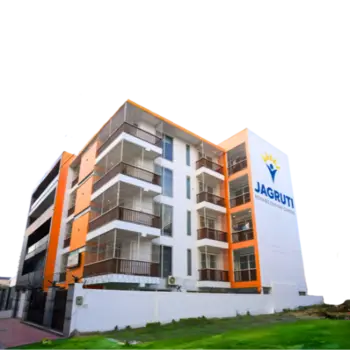Physical Therapy (PT)
What is physical therapy (physiotherapy)?
Physical therapy, or physiotherapy, is a treatment that improves the physical movement or physical performance of a human body. This treatment is used for pain management, to recover from an injury, or to heal physically after surgery. Additionally, physical therapy aims to prevent injuries in the future by strengthening the body.
Various physiotherapy techniques included in the treatment are stretching, strength training, massage, heat or cold therapy, hydrotherapy, and transcutaneous electrical nerve stimulation (TENS).
What is physical therapy vs. occupational therapy?
Physical therapy and occupational therapy aim to enhance functionality but differ in focus and goals. Physical therapy addresses pain and stiffness in various parts of the body.
The treatment is also effective in treating postoperative physical limitations like injuries, muscle inflammation, or other health conditions. The primary goal of physical therapy is restoring strength, achieving mobility, and helping patients recover.
Occupational therapy, on the other hand, focuses on enabling a person to perform routine activities independently. “Occupation” here stands for personal chores performed during routine rather than job-related tasks. The aim is to restore the ability of a person to adapt to challenges and maintain independence.
What are the types of physiotherapy?
1. Geriatric Physiotherapy
Geriatric Physical therapy (physiotherapy) addresses age-related health issues. Techniques like electrical stimulation and aqua therapy enable the elderly to manage pain and lead a more comfortable life independently.
Individuals who have replaced their joints surgically or are suffering from problems like arthritis and osteoporosis can benefit from the treatment.
2. Cardiovascular Physiotherapy
Patients who suffer from cardiovascular and respiratory issues can opt for cardio rehab. Health problems like hypertension and chest aches, and those looking for post-heart attack recovery, can opt for physiotherapy for faster recovery.
3. Neurological Physiotherapy
Neurological physiotherapy aids recovery from strokes, brain injuries, and other memory-related disorders. By promoting synaptic connections, patients have been able to regain their mobility and redevelop their basic skills. With customised neurorehabilitation techniques, an improvement in flexibility was also observed.
4. Orthopaedic Physiotherapy
Orthopaedic Physical therapy (physiotherapy) treats musculoskeletal issues like backache, frozen shoulder, and scoliosis. With the help of assistive devices and therapeutic modalities, pain can be managed, and post-rehabilitation treatment accelerates.
5. Paediatric Physiotherapy
This therapy is particularly beneficial for children or infants with limb disabilities or other genetic conditions that hinder proper mobility. It also helps with enhancing growth during developmental stages and other milestone-related challenges.
What does physical therapy treat?
Physical therapy (physiotherapy) treats issues and health problems that affect mobility and cause pain or inflammation in joints and muscles. Physical therapy can make management of problems like lymphoedema, sports injuries, and muscular dystrophy easier.
Patients can expand their range of motion and improve the functioning of the body that was compromised due to health issues like osteoporosis.
Side effects of problems like vertigo include compromised balance that can cause falls. However, with physical therapy, these accidents can be prevented. Neurological disorders like Parkinson’s, Huntington’s, and so on can also be managed.
What are the benefits of physical therapy (physiotherapy)?
- Physical therapy (physiotherapy) improves the mobility of patients. Regular sessions enhance joint mobility and allow patients to regain coordination. The posture of a patient gets better as aches and pains are taken care of.
- Promotes functionality, which is essential to performing daily tasks efficiently. Muscles strengthen, balance improves, and movement patterns get corrected. Reliance on drugs like opioids as physical therapy is a natural process.
- Enhances long-term physical health and enhances the quality of life. Management of chronic conditions becomes easier, which ensures sustained health benefits. This therapy also supports cardiovascular and respiratory health.
- Rehab from sport-related injuries like sprains, strains, and fractures can be recovered. With the help of targeted rehabilitation plans, patients can return to their sports safely while preventing re-injury.
- Physical therapy assists patients suffering from neurological conditions like multiple sclerosis, Parkinson’s, and so on. The therapy aims to promote neural conditions and strengthen muscles to make living with these issues easier.
- Physical therapy (physiotherapy) reduces symptoms related to arthritis and osteoporosis. This therapy reduces joint pain, controls muscle inflammation, and enhances joint stability.
- Physical therapy (physiotherapy) is also essential for maintaining proper mental health. Patients who attend therapy sessions regularly have proven to feel less depressed and manage stressful situations calmly.
What are the risks of physical therapy (physiotherapy)?
Risks associated with physical therapy include worsening of pre-existing conditions. With incorrect techniques, aches and pains of the body can worsen, which can affect mobility, strength, and overall functioning. Performing cardiovascular physiotherapy can cause chest pains and other complications as well.
Is physical therapy (physiotherapy) worth it?
Yes. When administered by a medical professional, physical therapy (physiotherapy) is an effective treatment. Patients must ensure that they communicate their symptoms and expectations.
However, conduct thorough research before selecting a professional who will administer the therapy. An experienced physiotherapy expert will prescribe the right supplements that will ensure complete recovery and the right number of sessions to start gradually and move ahead according to the severity of the problem.







